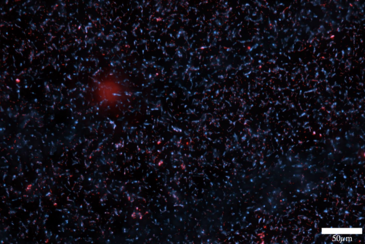Guillaume Pillot, Soniya Sunny, Victoria Comes, Sven Kerzenmacher
Faraday Discussions Advance Article (2023)
doi: https://doi.org/10.1101/2021.10.25.465696 preprint available open access: doi: http://biorxiv.org/lookup/doi/10.1101/2021.10.25.465696
The electrosynthesis of valuable compounds by biofilms on electrodes is being intensively studied since few years. However, so far, the actual biofilms growing on cathodes produce mainly small and relatively inexpensive compounds such as acetate or ethanol. Recently, a novel Knallgas bacterium, Kyrpidia spormannii EA-1 has been described to grow on cathodes under thermophilic and microaerophilic conditions, producing significant amounts of PolyHydroxyAlkanoates (PHAs). These PHA are promising sustainable bioplastic polymers with the potential to replace petroleum-derived plastics in a variety of applications. However, the effect of culture conditions and electrode properties on the growth of K. spormannii EA-1 biofilms and PHA production is still unclear. In this study, we report on the optimization of growth and PHA production in liquid culture and on the cathode of a Microbial Electrosynthesis System. Optimization of the preculture allows to obtain high cell density of up to 8.5 Log10 cells∙ml-1 in 48h, decreasing the time necessary by a factor of 2.5. With respect to cathodic biofilm formation, this study was focused on the optimization of three main operating parameters, which are the applied cathode potential, buffer pH, and the oxygen concentration in the feed gas. Maximum biofilm formation and PHA production was observed at an applied potential of -844mV vs. SCE, pH 6.5, O2 saturation of 2.5%. The PHA concentration in the biofilm reached a maximum of ≈26.8 μg·cm-2 after optimization, but at 2.9% the coulombic efficiency remains relatively low. We expect that further nutrient limitation will allow the accumulation of more PHA, based on a dense biofilm growth. In conclusion, these findings take microbial electrosynthesis of PHA a step forward towards practical implementation.
@ The Authors (2021) licensed under CC BY-NC 4.0

